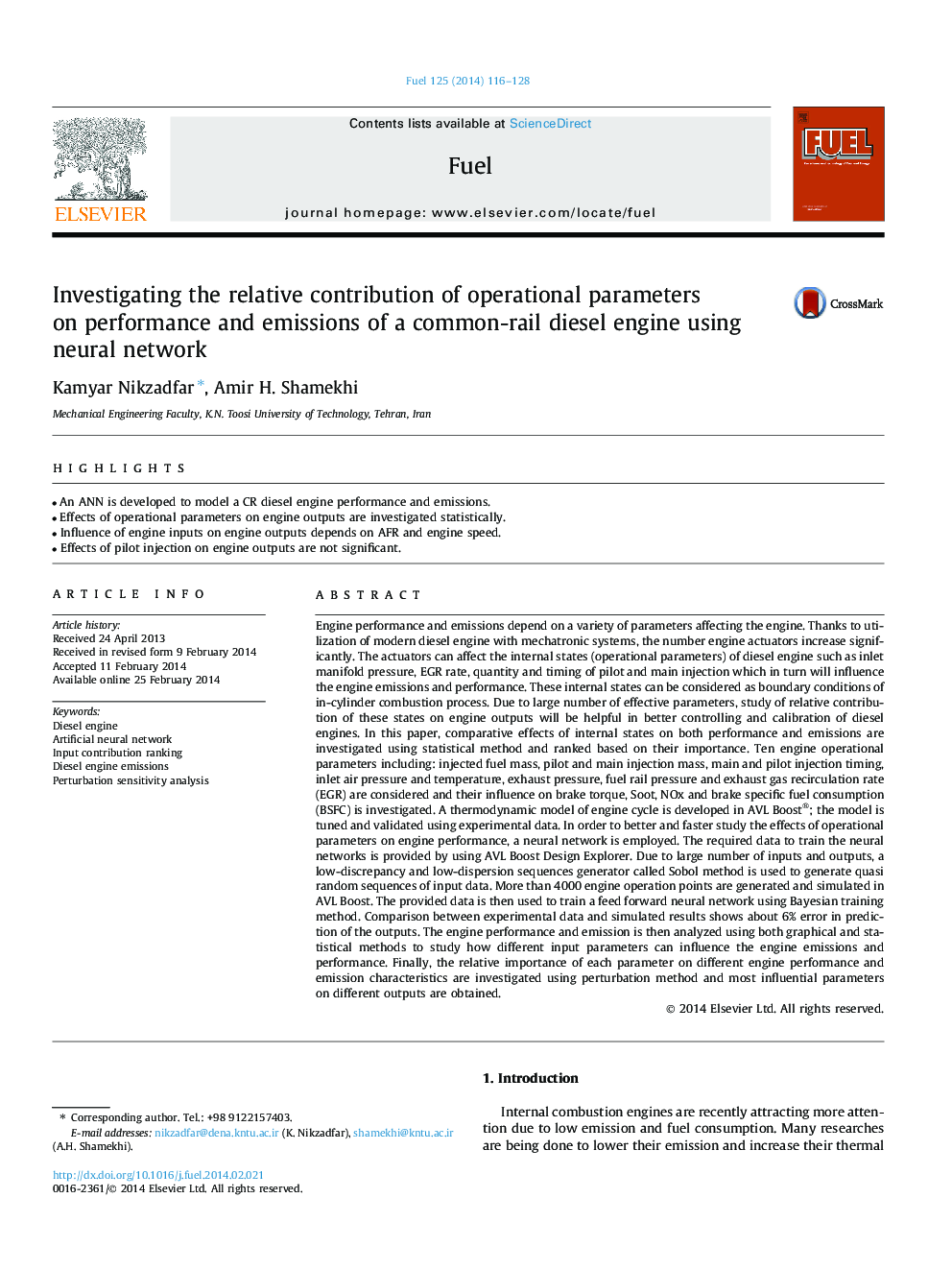| کد مقاله | کد نشریه | سال انتشار | مقاله انگلیسی | نسخه تمام متن |
|---|---|---|---|---|
| 6637885 | 461149 | 2014 | 13 صفحه PDF | دانلود رایگان |
عنوان انگلیسی مقاله ISI
Investigating the relative contribution of operational parameters on performance and emissions of a common-rail diesel engine using neural network
ترجمه فارسی عنوان
بررسی سهم نسبی پارامترهای عملیاتی بر عملکرد و انتشار یک موتور دیزلی مشترک با استفاده از شبکه عصبی
دانلود مقاله + سفارش ترجمه
دانلود مقاله ISI انگلیسی
رایگان برای ایرانیان
کلمات کلیدی
موتور دیزل، شبکه های عصبی مصنوعی، رتبه بندی سهم ورودی، انتشار موتور دیزل، تجزیه و تحلیل حساسیت اختلال،
موضوعات مرتبط
مهندسی و علوم پایه
مهندسی شیمی
مهندسی شیمی (عمومی)
چکیده انگلیسی
Engine performance and emissions depend on a variety of parameters affecting the engine. Thanks to utilization of modern diesel engine with mechatronic systems, the number engine actuators increase significantly. The actuators can affect the internal states (operational parameters) of diesel engine such as inlet manifold pressure, EGR rate, quantity and timing of pilot and main injection which in turn will influence the engine emissions and performance. These internal states can be considered as boundary conditions of in-cylinder combustion process. Due to large number of effective parameters, study of relative contribution of these states on engine outputs will be helpful in better controlling and calibration of diesel engines. In this paper, comparative effects of internal states on both performance and emissions are investigated using statistical method and ranked based on their importance. Ten engine operational parameters including: injected fuel mass, pilot and main injection mass, main and pilot injection timing, inlet air pressure and temperature, exhaust pressure, fuel rail pressure and exhaust gas recirculation rate (EGR) are considered and their influence on brake torque, Soot, NOx and brake specific fuel consumption (BSFC) is investigated. A thermodynamic model of engine cycle is developed in AVL Boost®; the model is tuned and validated using experimental data. In order to better and faster study the effects of operational parameters on engine performance, a neural network is employed. The required data to train the neural networks is provided by using AVL Boost Design Explorer. Due to large number of inputs and outputs, a low-discrepancy and low-dispersion sequences generator called Sobol method is used to generate quasi random sequences of input data. More than 4000 engine operation points are generated and simulated in AVL Boost. The provided data is then used to train a feed forward neural network using Bayesian training method. Comparison between experimental data and simulated results shows about 6% error in prediction of the outputs. The engine performance and emission is then analyzed using both graphical and statistical methods to study how different input parameters can influence the engine emissions and performance. Finally, the relative importance of each parameter on different engine performance and emission characteristics are investigated using perturbation method and most influential parameters on different outputs are obtained.
ناشر
Database: Elsevier - ScienceDirect (ساینس دایرکت)
Journal: Fuel - Volume 125, 1 June 2014, Pages 116-128
Journal: Fuel - Volume 125, 1 June 2014, Pages 116-128
نویسندگان
Kamyar Nikzadfar, Amir H. Shamekhi,
